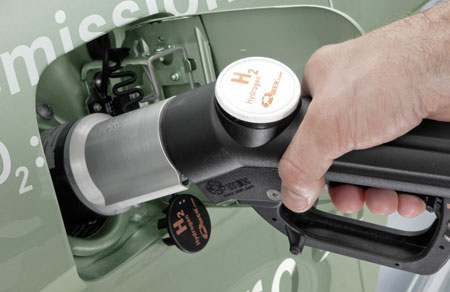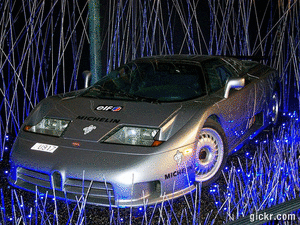
This has to be the geekiest and coolest piece of news related to the alternative fuel industry that has come out in a while. A hydrogen fuel cell is one very clean way to generate electricity on the fly in a car, eliminating the need for long waits for recharge times. But the hydrogen has to be generated first and that also requires alot of energy. One of the best sources of hydrogen is water, as it is so abundant. In fact, water is a byproduct of the fuel cell electricity generation process.
Wouldn’t it be nice if you could store the water in the car and just synthesize it into hydrogen and oxygen on the fly? The fundamental laws of physics says that this is not possible as you cannot create energy out of nothing. It would take alot of energy to separate the water into hydrogen and oxygen. There are many who claim to have ‘broken’ this law, such as the massive Hydroxene and LMG tie-up publicity that happened quite a while back in our very own Bolehland.
Researchers are looking for more and more ways to create hydrogen in a cheaper way in terms of energy expenditure than existing methods and the latest is an effort by a team in MIT. It is basically artificial photosynthesis using a modified virus and sunlight to split water into hydrogen and oxygen atoms. An engineered bacterial virus called M13 binds with the molecules of a catalyst (iridium oxide) and a biological pigment (zing porphyrins). They become wire-like devices that can efficiently split oxygen and hydrogen from water. The virii are encapsulated in a microgel matrix to maintain a uniform arrangement, keeping them stable.
“The role of the pigments is to act as an antenna to capture the light. and then transfer the energy down the length of the virus, like a wire. The virus is a very efficient harvester of light, with these porphyrins attached,” says Angela Belcher, the Germeshausen Professor of Materials Science and Engineering and Biological Engineering.
Right now what the system does is extract the oxygen, but the hydrogen atoms get split into their component protons and electrons. A second part of the system is still under development that will combine these hydrogen atom components back into proper atoms and molecules. They also need to find a cheaper catalyst.
This artificial photosynthetis still has a long way to go however. According to DuPont Professor of Materials Chemistry and Physics at Pennsylvania State University Thomas Mallouk, for this system to be cost-competitive with other approaches to solar power, it has to be at least ten times more efficient than natural photosynthesis, be repeatable a billion times, and use less expensive materials.
This isn’t going to happen in the new feature, but the ideas that this research project has brought up could help with the big picture of alternative fuel! For now, a prototype device than can carry out the splitting of water into oxygen and hydrogen should be able to be ready in two years, according to Professor Belcher.
Source from: http://web.mit.edu/press/2010/virus-water aka massachusetts institute of technology















